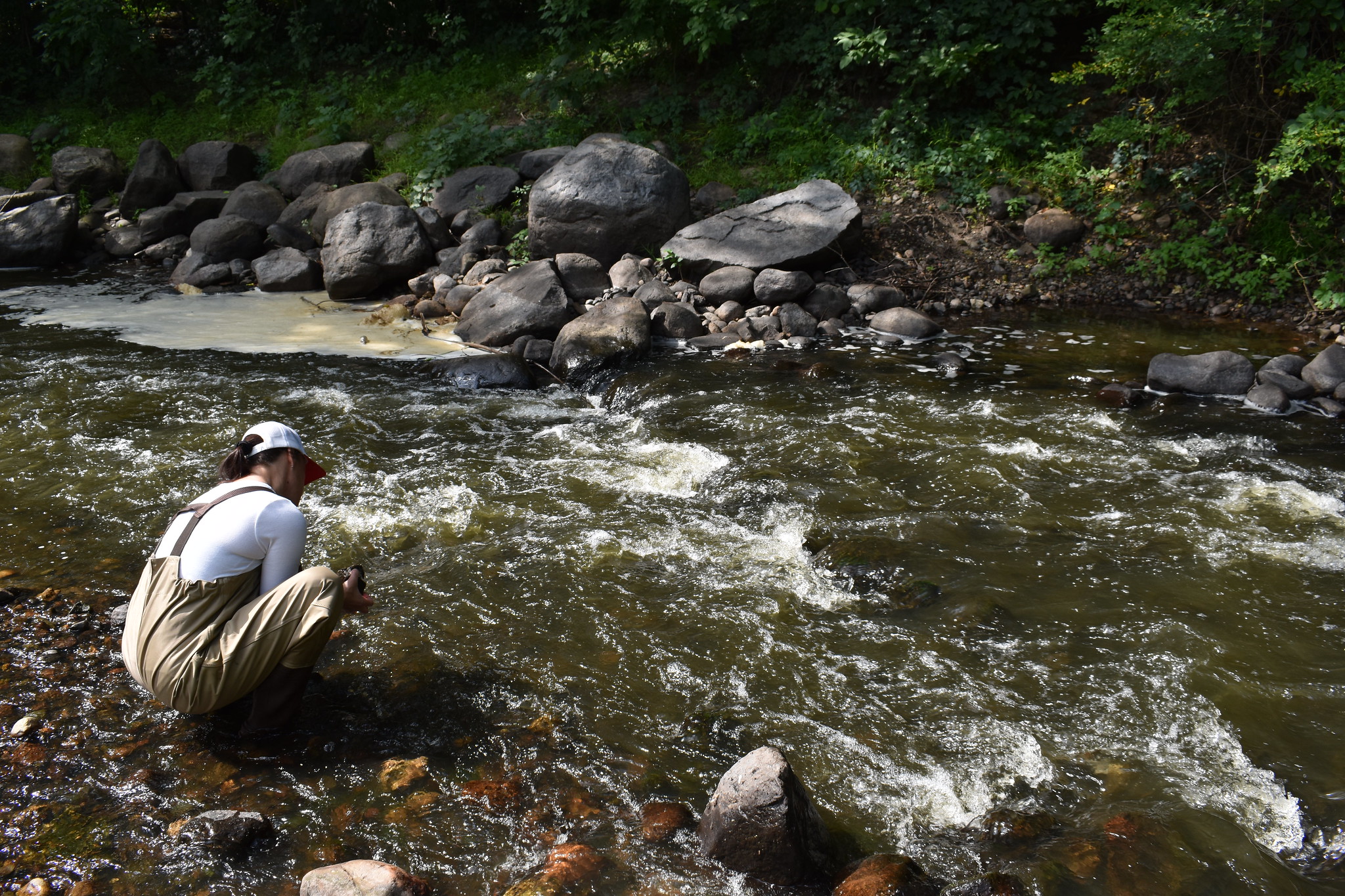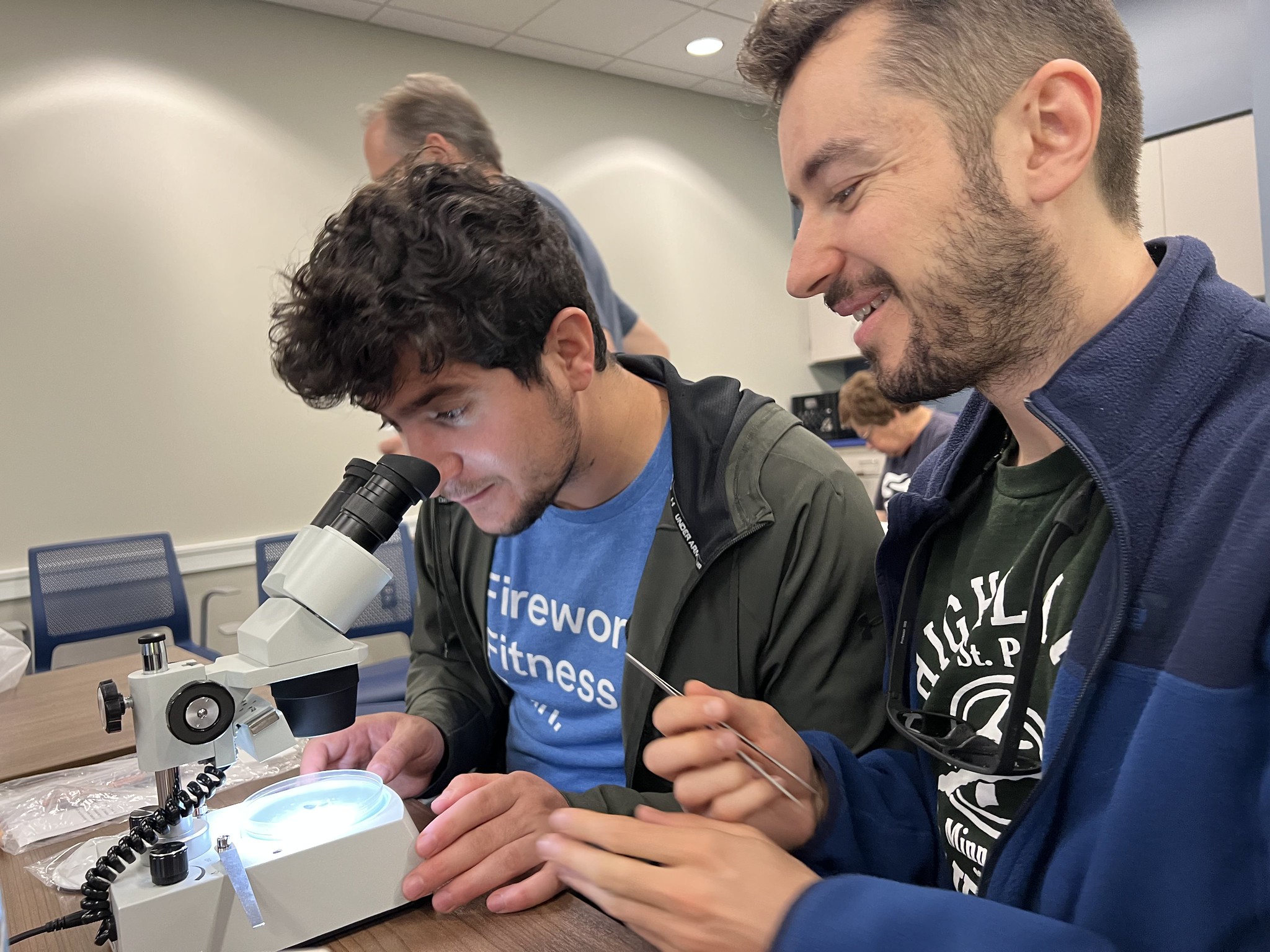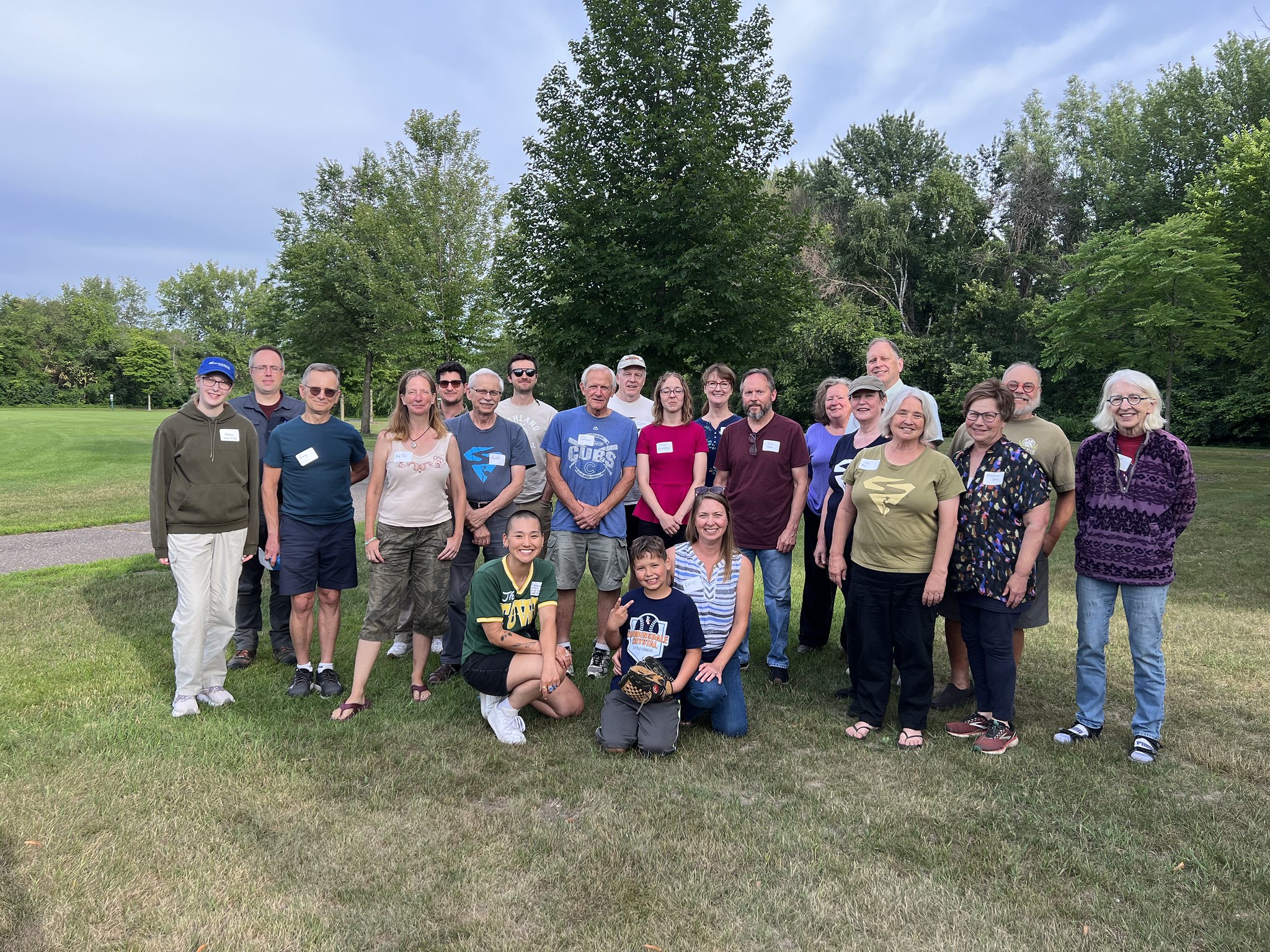Five things we learned from stream monitoring in 2023

Our Stream Health Evaluation Program volunteers have collected nearly 20 years of community science data on the health of creeks in Rice Creek Watershed District.
FMR's Stream Health Evaluation Program (SHEP) is now 17 seasons strong. Through flood seasons, drought seasons and a global pandemic, this dedicated group of volunteers — composed of 80% returning volunteers this year — always finds creative (and safe!) ways to keep this macroinvertebrate sample-collecting project alive.
SHEP is a unique FMR program in that volunteers undergo additional training to enhance their knowledge of water quality monitoring. While no prior knowledge is necessary, the sampling season requires commitment. Volunteers gather macroinvertebrate samples from streams in the Rice Creek watershed, identify them with microscopes and field guides, and analyze the health of a stream based on the level of pollution tolerance these macroinvertebrates have.
Each team is required to pull at least 100 samples from each of the three streams they monitor. We need an adequate sample size for our contracted partner and field biologist, Katie Farber, to put together her analysis of the overall stream's health. We then report these findings back to the Rice Creek Watershed District.
This January we wrapped up our 2023 data analysis and gathered reflections from participants. Here are five main takeaways from the 2023 stream monitoring season:
1. 2023 was the driest season in SHEP's history!
All three of our sampling teams observed lower water levels than in years past, but drought conditions were most considerable for the team that monitors streams in the Lino Lakes and Hugo area. After their work days in the field, they reported back two completely dry stream beds — the first time ever in 17 years of data collection.
Of course, drought affected the Mississippi River this year as well. Read more about the impacts of low water on the river, habitat and more.
2. Lower water levels across the board meant we found different macroinvertebrates than usual due to the habitat's altered conditions.
Because of drought's dramatic changes to the environment, the species we found were different as well.
Organisms thrive where the appropriate habitat exists. Decreased oxygen levels, shoreline vegetation and running water meant the habitat hosted a new cast of characters.
This at least kept sampling and identifying macroinvertebrates interesting for our community scientists!
3. Of the nine creeks we sample, only one stream's health trends seem to be worsening.
The families of macroinvertebrates and sensitive species present in our samples can tell us a lot about the likely degree of pollution. We use those findings to assign a score to each creek each year. In the report this year, those scores told us that many of the creeks we sample are generally stable, and a few are even improving overall. Only one was declining, probably as a result of low water flow.

SHEP volunteers receive lab training as well as field training. They typically score 90-99% accuracy on their macroinvertebrate identification, producing high-quality findings every year.
4. Hands-on training in the field is as much fun as we hoped it would be.
A special part of this program is the additional educational opportunities and advanced trainings for our volunteers. These trainings make it possible for new volunteers without prior experience to monitor streams in self-directed teams. Instead of a hybrid-style classroom and field training, we hosted our field training this year entirely outside, giving participants a hands-on training experience right away — a welcome change! It's no surprise that our volunteers enjoy getting outside as much as we do.
We pair this training with a session for practicing microscope use and using a field guide of aquatic macroinvertebrates to identify the many samples that each team collects throughout the season.
5. SHEP runs as smoothly as it does through the exceptional leadership and collaborative and adaptable spirit of its volunteers.
Every year as the coordinator of this program, I hear from volunteers that the community aspect of this program is a major reason why they come back.
We have participants who have been a part of the program since its inception, returners who have come back each year since they found out about it, and always a new slate of members who bolster the program with fresh perspectives.
Each year, 30 volunteers are recruited and divided into three teams of 10 people, with one to two volunteers acting as team leads. These smaller teams each become their own unique ecosystem, reflecting the varied professional or personal interests that meld together throughout the season. As one volunteer put it, "[SHEP is a] great social activity while accomplishing citizen science!"
Thanks to everyone who volunteered and worked on the program in 2023!
Looking ahead to 2024 and beyond
FMR staff, SHEP team leaders and field biologist Katie Farber came together at the end of the 2023 season to reflect on the program and think about how to consolidate two decades of wisdom to ensure another successful 20 years to come. As the contracted SHEP coordinator, I'm working on synthesizing input and revamping the SHEP program to bring it up to speed with what volunteers have found to be most effective over the years.
At the intersection between closing one season out and starting another, I feel assured that the fresh implementation of our partners' and volunteers' input will lead to an even stronger synergy for the program in the future.
Check out the full report
You can read more detailed findings in our 2023 SHEP report, which is now available. Each year, we submit this report to our partners and funders at the Rice Creek Watershed District. SHEP's growing data set is a valuable reference for city workers to see what changes in water quality may be due to environmental shifts or human-imposed developments.
Get involved
Our SHEP teams will have a few volunteer openings for 2024. Rice Creek Watershed District residents are especially encouraged to apply. (Check this map to see if you live in the watershed.) You can learn more about volunteering here or contact volunteer@fmr.org if you want to sign up.
Project support
SHEP is made possible through funding and support from the Rice Creek Watershed District, as well as our longstanding partnership with field biologist, Katie Farber of Bolton & Menk, Inc. And thanks to our volunteers and our members for making all our programming possible.

Thanks to our 2023 volunteers! If you live in the Rice Creek Watershed District and you're looking for a unique, in-depth way to contribute to your watershed, join us as a SHEP volunteer.